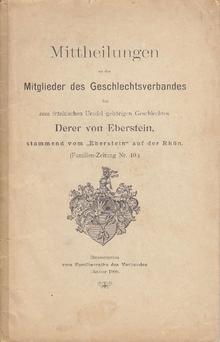
Back Uradel Danish Deutscher Adel#Uradel / Alter Adel German Põlisaadel Estonian Uradel Italian Oeradel Dutch Uradel NB Столбовое дворянство Russian Урадел Serbian Uradel Swedish

Uradel (German: [ʔuːɐ̯ˈʔaːdl̩], German: "ancient nobility";[1] adjective uradelig or uradlig) is a genealogical term introduced in late 18th-century Germany to distinguish those families whose noble rank can be traced to the 14th century or earlier.[2] The word stands opposed to Briefadel, a term used for titles of nobility created in the early modern period or modern history by letters patent. Since the earliest known such letters were issued in the 14th century, those knightly families in northern European nobility whose noble rank predates these are designated Uradel.[3]
Uradel and Briefadel families are generally further divided into categories with their ranks of titles: adlig (untitled nobility), freiherrlich (baronial), gräflich (comital), fürstlich (princely) and herzoglich (ducal) houses. The latter two are also referred to as Hochadel (High Nobility).
- ^ Godsey 2004, p. 58.
- ^ Grimm, Deutsches Wörterbuch, citing Eichhorn, Einleitung in d. d. Privatrecht (1827) for an early attestation of the term, and Brockhaus 1 (1928) for the definition alle urkundlich vor 1350 als adlig nachweisbaren geschlechter. See also Duden; Meaning of Uradel, in German. [1]
- ^ William D. Godsey (18 November 2004). Nobles and Nation in Central Europe: Free Imperial Knights in the Age of Revolution, 1750–1850. Cambridge University Press. pp. 57–59. doi:10.1017/CBO9780511496752.004. ISBN 978-1-139-45609-8.